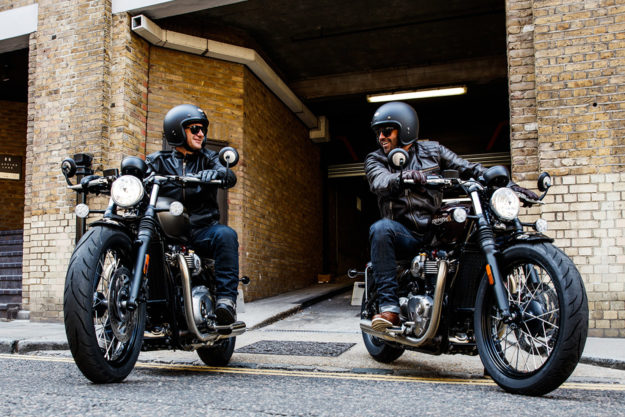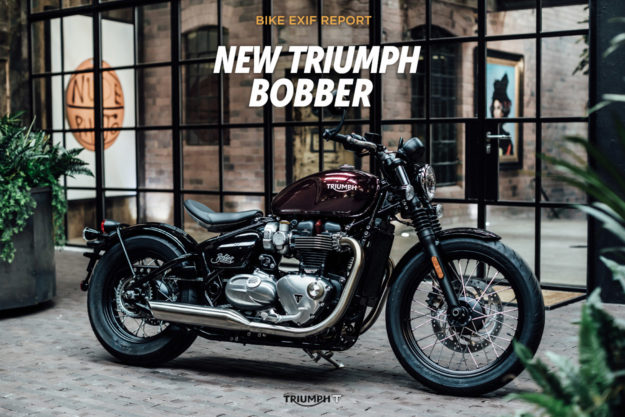
Triumph is going all-out to conquer every sector of the motorcycle market. The Triples and Tigers are approaching icon status, and the new Bonnevilles are selling as fast as the factory can make them.
It must have been tempting to take a breather, but Hinckley is now pushing into uncharted territory: A couple of hours ago here in London, it revealed the new Bonneville Bobber to the world’s press.
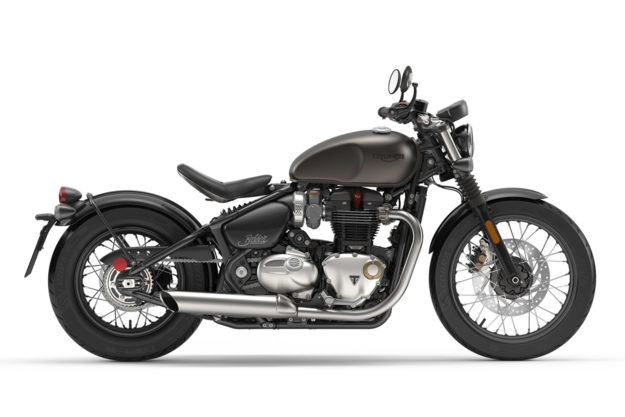
The Bobber is even more retro than the regular Bonneville, and if you’ve seen the spy shots, rest assured that it looks way better in the metal.
It also embodies the bobber spirit more authentically than anything Harley or Indian have produced in recent years.
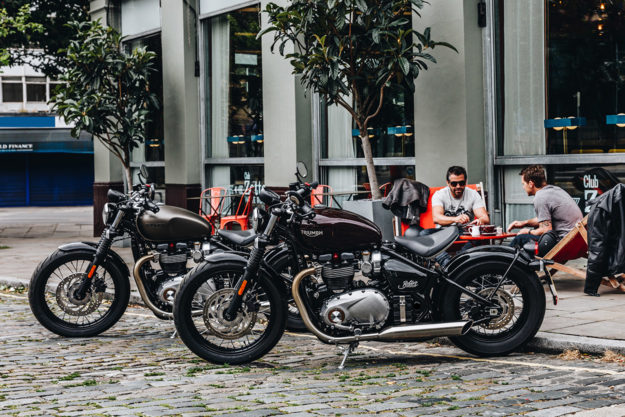
It’s easy to forget that in many countries, especially the USA, there’s just as much interest in bobbers as cafe racers or scramblers. So it’s a potentially lucrative move for Triumph—and critical to get ‘right.’
Let’s start at the back, literally: the Triumph Bobber has taken the classic ‘softail’ route, hiding the rear shock under the seat. It’s similar to the setup that Harley-Davidson has been using since the FXST of the mid 80s, but with a more appealing ‘swing cage’ in view.
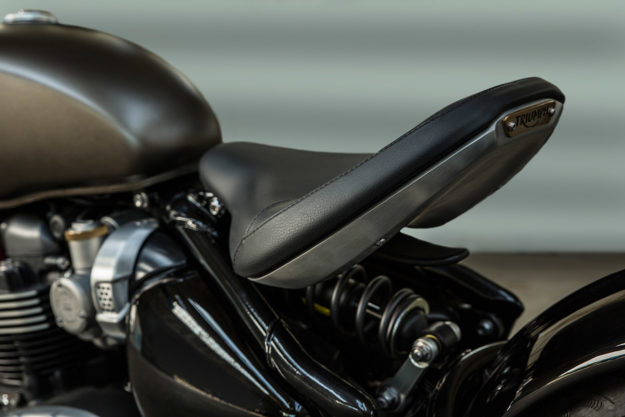
Harley’s Softails (and the Japanese facsimiles that followed) have always looked more like chunky cruisers, rather than true, cut-down bobbers. Triumph’s approach is more authentic straight out of the box, eschewing the enormous rear fenders of its stateside cousins, for a simpler 1940s-style treatment.
The simplicity of the styling and packaging is striking. In the years after WWII, such simplicity was easy to achieve. But modern motorcycles are much more complex, so Triumph have packed everything tightly behind the engine.
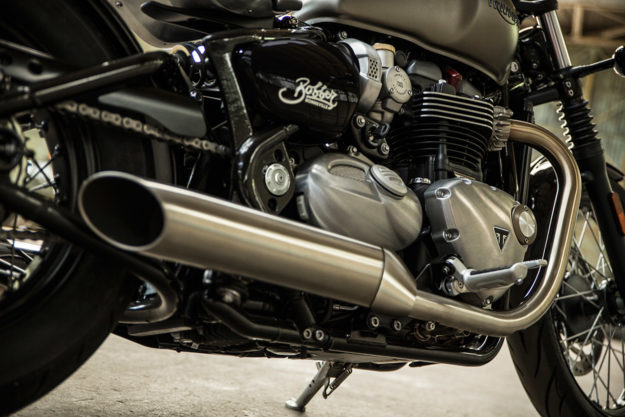
The same sort of trickery extends to the exhaust system, which appears to be a classic 2-into-2 job terminated with slash-cut mufflers. But there’s actually a catalytic converter box nestled into the bottom of the frame.
The engine is the new 1200cc unit used in the T120, but retuned for more torque lower down in the rev range and a richer exhaust note. Triumph is pitching the Bobber as a ‘T120 stripped down to the essence,’ but every other part aside from the motor is new.
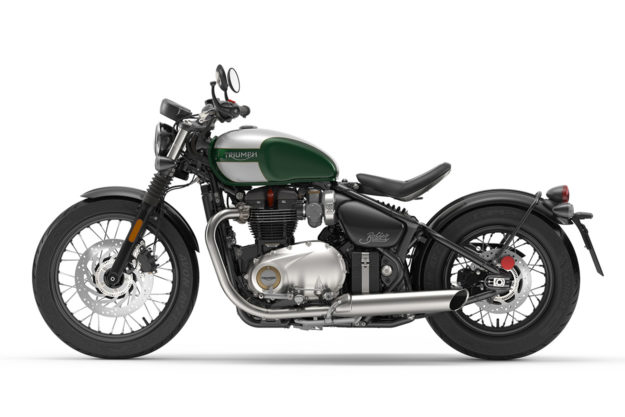
The frame is new too, with more relaxed geometry and a considerably longer wheelbase. Chief Engineer Stuart Wood told us that even ancillaries such as the radiator have been modified.
The black wire-spoked wheels are 19’’x2.5’’ at the front and 16’’x3.5’’ at the back, shod with custom Avon Cobra tires specially developed for the bike. Helping to keep this rubber on the road are switchable traction control, ABS and two riding modes—‘road’ and ‘rain.’
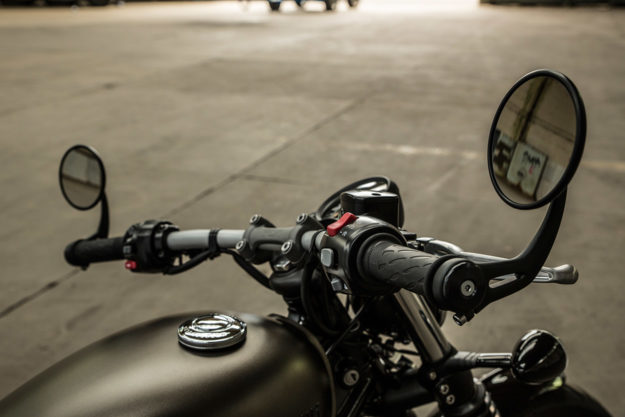
Despite the vintage styling, there’s plenty of modern engineering to be seen—if you know where to look. The seat, for example, is adjustable both fore and aft, and up and down.
You can choose a more sporting ‘forward’ position for spirited riding, or slide the seat back and down to a 690mm (27 inches) height for a cruiser vibe. The clocks can also be adjusted to match.
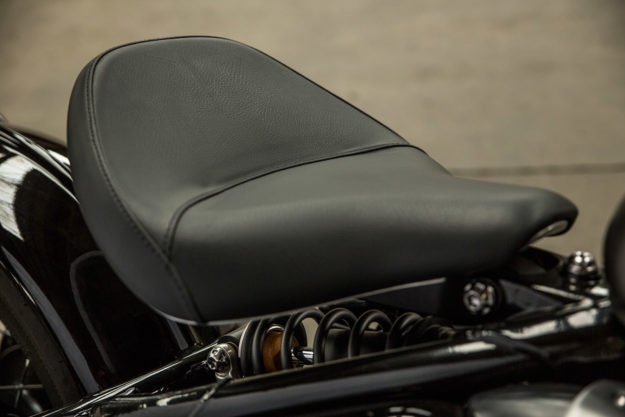
Not surprisingly, there’s going to be a big catalog of accessories for the Bobber. Notables include an uprated Fox shock, shorty fenders, a Vance & Hines exhaust system, and a side-mounted number plate setup—which is homologated for the US only.
Other modern niceties such as heated grips, different seat trims and cruise control will also be on offer. Service intervals are a reassuring 10,000 miles (16,000 kilometers). At the launch we also saw optional ape hanger bars on one bike, but the less said about those, the better…
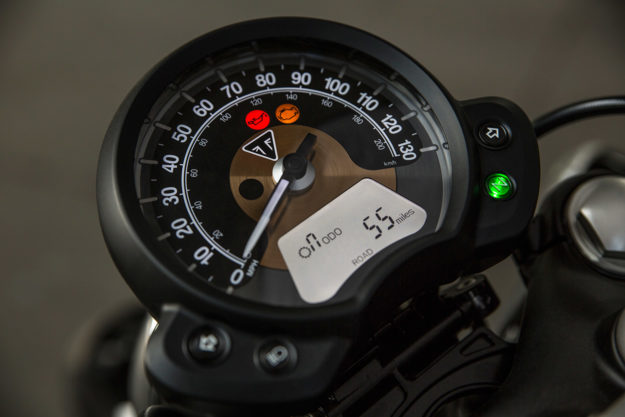
Visually, the new Bobber ticks all the boxes for riders who want vintage (rather than merely retro) style. It has the clean hardtail styling you’d expect to see from a Lowbrow Customs build—not a major factory bike.
It’s a brave move on Triumph’s part, but the brand has the heritage to pull it off. After all, the first successful British parallel twin was the rigid-framed Speed Twin of 1937.
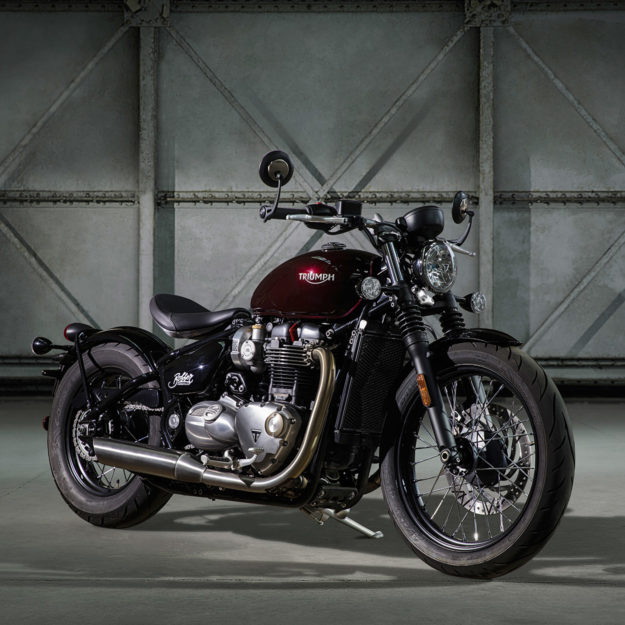
There’s no direct competitor to the Bobber, but it’s likely to pull sales away from Harley’s Sportster. Pricing and full specs will be revealed in mid-December—at the same time as the press rides—before the bike goes on sale in the first few weeks of 2017.
If the specifications and riding experience are up to scratch, it looks like Triumph has another winner on its hands.
Triumph Motorcycles | Facebook | Instagram
